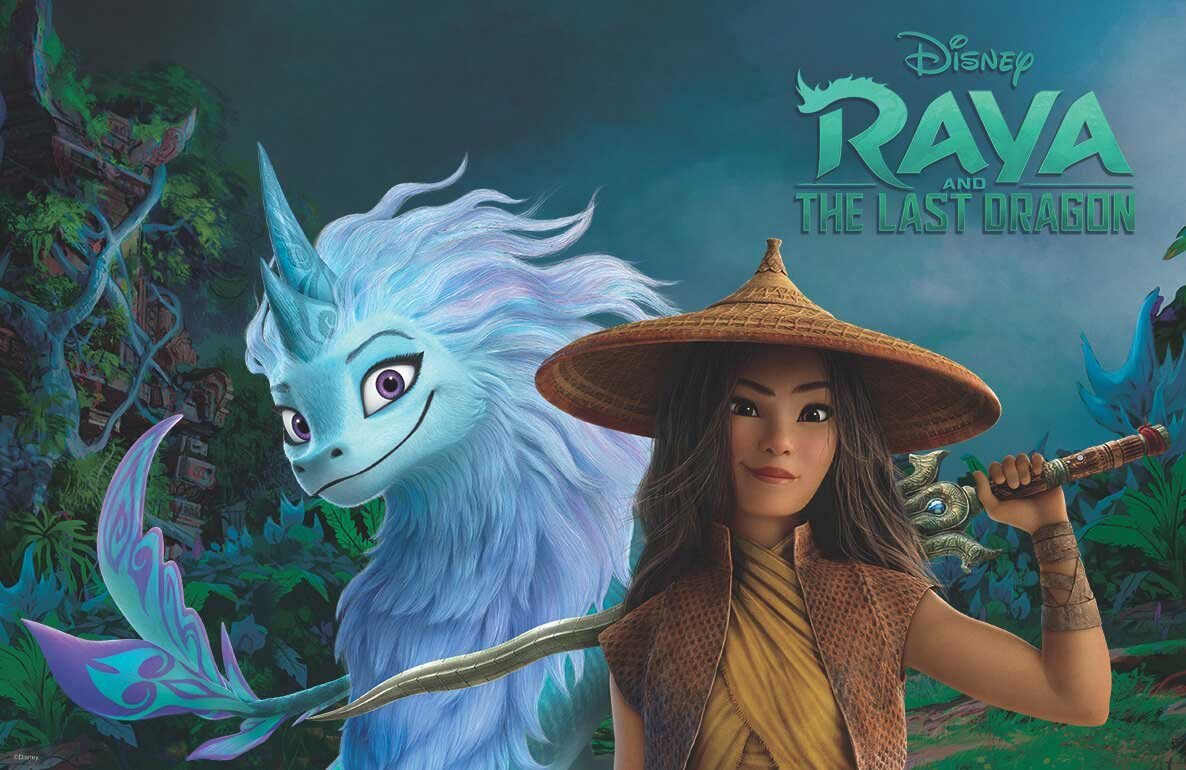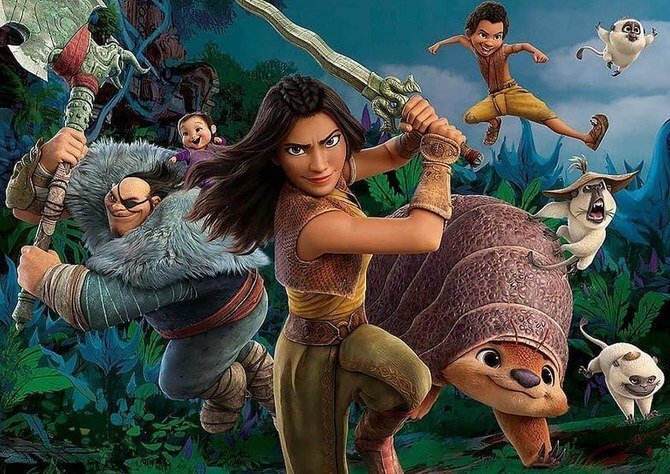Raya and the Last Dragon, Balanced Teams & TRUST
Like many other parents, I stopped watching films that I formerly loved because my first child controls the TV. Now that my daughter is almost seven and my son is nearly four, we have all watched several years of Paw Patrol, Sesame Street, Pixar, and Disney. While this experience might seem negative, it is quite the opposite. Pixar’s Inside Out is phenomenal. Moana is in my top three action movies, competing with Gladiator and Braveheart. And now, Raya and the Last Dragon is teaching my children things that I wish all Product Development teams knew. The movie is excellent, and I suggest you watch it, even if you don’t have young children.
I’ll go ahead and give you the answer to what makes Balanced Teams really click and straight-up kick butt. First, a little background: at Crafted, the core of a Balanced Team is Product Management, Product Design, and Engineering. Several other versions include QA, DevOps, and various business units. Within these disciplines, many factors make a Balanced Team excel, such as experience, intelligence, tactics, teamwork, dedication, and reliability. With all of that in mind, the most important attribute that makes the cream rise to the top is the TRUST among team members and across disciplines.
Now that you know how to build a great team, continue reading to see what Raya and the Last Dragon teaches us about TRUST. If you have not seen the movie, check it out, but I will also give you a quick rundown.
Cliff Notes:
Setup of TRUST
Long, long, ago dragons, each with their own magical powers, roamed the world.
Evil Druun Spirits attacked all living creatures, turning them to stone.
Five brother and sister dragons realized the only way to defeat the Druuns was to combine their separate and distinct powers into one Dragon Gem.
To do so, four siblings had to selflessly TRUST the fifth dragon and give up their powers and the gem to that dragon.
When four dragons’ relinquished their power, they turned to stone while the chosen dragon lived to defeat the Druuns and save the world.
As long as the Dragon Gem is safe, the Druuns cannot harm living creatures.
Decline of TRUST
Warring ensues for years as five human civilizations seek to control all the power of the Dragon Gem.
During a battle for the gem, it is broken into five pieces, and even though each piece still has magical powers, the Druuns invade again.
Each piece of the Dragon Gem is now in the hands of the five different siloed civilizations.
Although the world is surviving, it is far from perfect.
Rebuilding TRUST
Raya begins her quest to fulfill her father’s vision of rebuilding a Utopian Society by finding the last dragon and putting the Dragon Gem back together.
Raya finds the last dragon, Sisu, who was initially entrusted with the Dragon Gem
Raya finds four of the five pieces of the Dragon Gem.
While battling the last and most sinister of the five societies, Raya must learn what TRUST means.
Initially, Raya expects to be TRUSTed but does not TRUST others.
Sisu teaches Raya that when her siblings entrusted Sisu as “The One,” any of her siblings could have done the same. Sisu was not any more or less unique, talented, or gifted than the others.
Raya finally realizes that to save the world, she must be the first to show TRUST and give up her control of the Dragon Gem.
Watch the movie to see how it plays out. There are a lot of good details and plot twists!
TRUST & Balanced Teams
So, how does this Disney movie translate to our thoughts on Balanced Teams? Let’s compare what happens when “teams” TRUST and don’t TRUST each other.
When TRUST is Eroded
Most of the movie is spent with the five warring civilizations fighting for the Dragon Gem and then ultimately controlling and guarding the five pieces of the shattered gem. Though each part of the shattered gem contains magical powers, the gem is not nearly as powerful as the combined Dragon Gem and allows the Druuns to bring evil back into the world.
At this point in the post, either you are drawing parallels to your own experiences and situations and know where this is going, or you are thinking about how to block my nonsense posts. ;-) Hang in there with me.
The five gems in our Balanced Team analogy represent the different disciplines and the skill sets they possess. Each discipline alone is pretty phenomenal--I am constantly in awe with the cool items Product Development professionals can imagine and make real.
Who has worked with the following types:
A Product Manager who knows exactly what to build, how it should look, and how it should be built. (OMG--is this me! Ask my team, and let me know what they say!)
An engineer who could single-handedly make all the right choices and take the company to an IPO if other people just weren’t in the company.
A designer who hardly shows their work and then only takes feedback defensively.
(Hopefully, these examples are dramatized).
When teams don’t value or don’t understand how to TRUST and work collaboratively across disciplines efficiently, you don’t get the best outcomes. When teams value one perspective above others’ ideas, they do not build the best solutions. Teams must realize that value is not only in the line of code, user experience, or requirements but more so in getting the right solutions into their user’s hands.
As a team member, you need to be OK with not getting all your desires met. Occasionally, this means you give a little and in other cases, this means you give A LOT
When TRUST Exists
In the movie, we see the first shining example of TRUST when the five dragons decide they must give up their personal powers and entrust one dragon with all the power. Because of this sacrifice, they each know they will turn to stone. Sisu, who is given all the powers of her brothers and sisters, sums it up well when she acknowledges:
“So, one by one, they combined all their magic, creating the Dragon Gem. I don’t know why they chose me. It could have been any of us. All I know is I TRUSTed them, and they TRUSTed me. And so, when they put their faith in me, it empowered me beyond anything I could imagine.”
We parallel this example to Balanced Teams in which the team members bring a depth and breadth of knowledge, skills, best practices, and previous experiences. Separately, each team member is very valuable, but together they are more potent and can build GREAT products. The Balanced Team is the structure that can allow this collaboration to happen. However, effective and great teamwork does not happen without TRUST and leaving ego at the door (which we will cover in later blog posts). When the team realizes that no one person has all the right answers or that no singular discipline is more important than any other, that is when the magic happens. On an individual level, it is also essential to understand that while your idea might be valid, it still may not be the chosen solution. And, that is OK!
At the end of the day, the power is in combining skills, perspectives, and ideas to ship the best product possible...and save the world!
Conclusion
If you oversee building teams, you need to spend more time making sure you hire collaborative and TRUSTING people across disciplines. Vetting product management, designer, or engineering skills is difficult; however, the real challenge lies in vetting those people who are open to learning, collaboration, and TRUST. If you are a team member, how can you be more TRUSTING? More transparent? How can you build more empathy for others’ views and be willing to make tradeoffs? Keep an open mind and always examine how you are interacting with the people around you.
Efficient, fluid, amazing Balanced Teams are very different from cross-functional groups of people working on common projects, and the products they build will show the difference!




